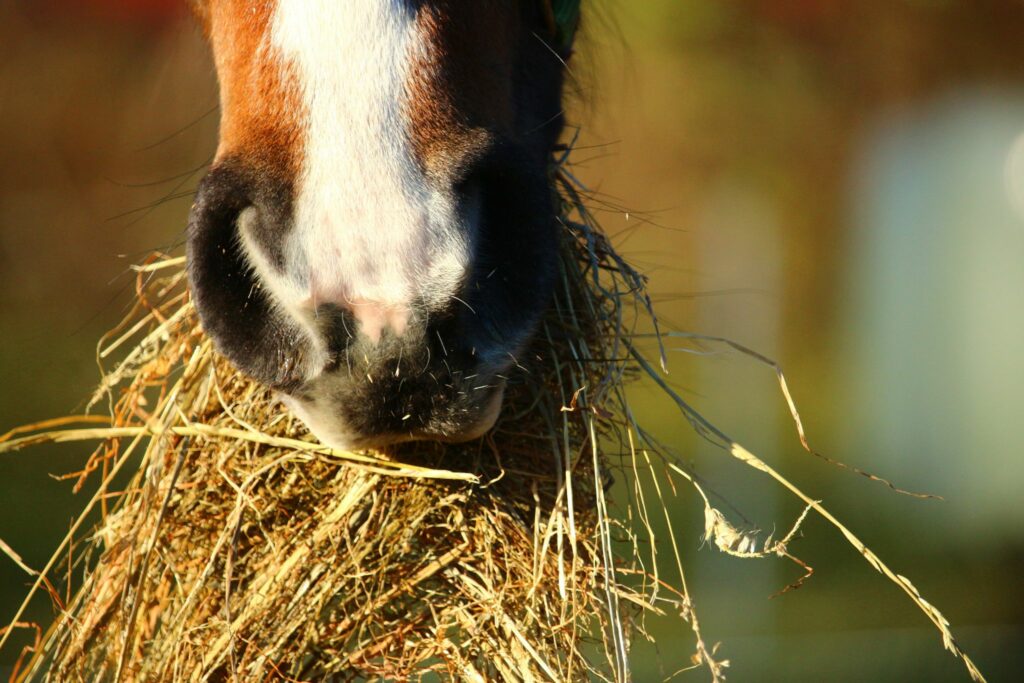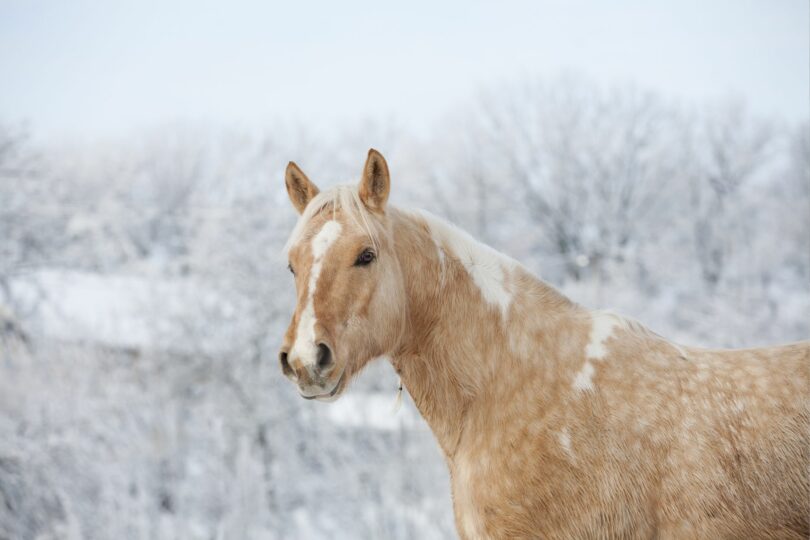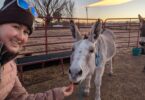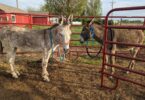How to maintain a healthy horse during the chilliest, most challenging time of year
The nights are drawing in earlier, and the mornings are misty and crisp. It’s officially THAT time of year again. The word ‘winter’ is enough to send an icy chill through any horse owner’s body, regardless of the temperature.
While it’s become tradition for horse owners to dread the winter months, it doesn’t need to be the seasonal boogie-man. Worry typically arises from a lack of understanding of equine management in the colder months. Most problems occur through overdoing it in fear of horses getting cold or going hungry.
Each year wars are waged between the elements and dedicated horse owners everywhere, whether it’s battling knee-deep mud, frozen water buckets, or the age-old question of appropriate blanketing. If you listen closely, you can already hear the first of us ferociously checking the weather and digging out our heaviest winter blankets.
Just remember, horses were once wild creatures that survived winter conditions all on their own. While the majority of horses today are not wild, they do have an innate ability to protect themselves from the weather, so keep that in mind when planning your horse’s winter routine this year.
Managing their routine
One of the biggest questions that plague horse owners over the winter is what to do about limited access to turnout. In most cases, turnout is significantly reduced, if not lost altogether, due to bad weather or damage from grazing all year round.
If you’re one of the lucky ones with ample access to year-round turnout, congratulations! The rest of us are very jealous of you.
If your horse has found himself spending more time inside than usual, then extra care should be taken to manage their routine so there are no drastic changes. Try to wean them off long days in the field slowly so it’s not such a shock when they’re suddenly standing in their stall for hours on end.
You might also want to increase your horse’s exercise plan. That doesn’t mean working at a higher intensity for a longer period though—rather, take them for a light hack each day they’re not working hard, or hand walk them when that’s not possible.
These activities are no more strenuous on their bodies than a day ambling around the paddock, so don’t worry about tiring them out.
It’s more detrimental to their bodies to be standing still for 24 hours getting stiff than it is to walk out for an hour a day, particularly if they’re on the older side.
Wherever possible, try to keep the rest of your horse’s routine as similar to the other seasons as possible. Whether that’s feeding at the same time, or riding at the same time, you know what works for you and your horse.

Photo Cred: Canva
Blanketing according to the horse
Ah, the dreaded question about blanketing rears its ugly head again. This is one of the most controversial debates in the equestrian world and it’s easy to understand why.
Everybody has a different opinion about when to blanket or what weight to use but frustratingly, there is no one right answer. Much like the above, it’s entirely down to the individual horse.
But that’s not to say there aren’t any basic guidelines to follow.
Just because you’re feeling the cold a little bit, doesn’t mean your horse is. We’re all a little guilty of this, and it’s one of the main reasons horses get over blanketed.
Over blanketing your horse can be just, if not worse for them, than not blanketing enough. Repeatedly putting heavier blankets on than required can lead to a variety of health issues, from dehydration from sweating and overheating to metabolic conditions like laminitis.
Naturally, how you blanket your horse will depend on whether they’re clipped or unclipped, and stabled overnight or living outside. If they’re standing in a stable, you’ll want something slightly warmer as they’re unable to move around to generate heat.
If you’re exercising or bathing your horse and they are sweaty or wet, don’t put a blanket on right away. Blanketing wet horses damages the hair follicles as they’re forced to lie flat and, over time, the coat’s natural ability to dry and warm the horse up is impaired. It’s also the number one way to harbor bacteria on the skin.
If you’ve just bathed your horse and you need to put something on him, then there are plenty of drying blankets or moisture-wicking blankets, such as coolers, that will do the trick.
They’re designed to work with the hair rather than against it, so your horse will dry off nicely and be ready to have a proper blanket on in no time.

Photo Cred: Canva
Feed and forage
Keeping a suitable feeding regime is a necessity over the winter. Don’t fall into the trap of feeding a lot just to keep the weight on though.
You’ve got to be feeding the right stuff to make an impact for your horse, so bulking up on one type of feed and neglecting another won’t have the desired effects.
If you’ve had to bring your horse in for the season, then take into account the reduced access to forage and fiber. Forage is the number-one way horses generate body heat, as it takes a bit of work from the digestive system to break it down. Horses need to be consuming approximately 1.5-3% of their body weight, so make sure this is readily available for them.
If your horse gorges themselves then investing in a trickle feeder might be a good idea, to stop them inhaling it in one go.
If your horse is one of the lucky ones with turnout, the weather will stop grass growing, if not kill it altogether, and it won’t be carrying nearly as much nutrients. Think about adding some hay to your fields to supplement the decline in grass so your horse still has access to all the nutrients and fiber to keep healthy and warm—particularly if they’re out in the elements all the time!
If you really want to pamper your babies, mix some hot water into your grain, beet pulp shreds, or hay cubes for a treat. Horses are less likely to drink when it’s cold, particularly if the water is icy to touch, so this is a great way to get fluids into them.
Remember to check buckets every day to make sure they’ve not frozen over, too.
Maintaining your horse’s health and condition
If you follow the prior steps, keeping your horse healthy and in good condition won’t be a mammoth task. But it’s a good idea to know the signs that your horse might not be feeling tip-top over the winter.
Consider taking a picture of your horse, side on and naked, each week. When you see them most or every day it’s hard to notice subtle changes in their weight or coat. By taking regular pictures you can directly compare them and pick up any small differences early before any problems settle in.
If you have access to a scale, then even better! Pop them on that regularly and keep track of the readings.
Check your horse’s legs thoroughly every time you groom, ride, or handle them to pick up any early signs of mud fever. This is very important if your horse has particularly feathery legs where mud can get trapped in the hair or scabs are easily missed.
A rapid drop in condition or a thin, dull coat is a good indicator that they’re not feeling great inside—usually their tummies. Ulcers are rife at this time of year, with the change in diet and routine, so keeping a close eye will alert you to any indicators they’re a bit under the weather and you can treat them quickly and appropriately.
Just make sure to get a vet’s opinion before you start doling out medication.
So, with the dreary weather and more than enough mud to fill your boots, winter is never a horse owner’s favorite time of year. However, it won’t feel like a marathon when you’ve got the right management for your horse.
At the end of the day, no one knows your horse better than you do, so don’t listen to nagging in your ear, and trust your gut! Contrary to popular belief, it isn’t the be-all and end-all so as long as you’re not completely neglecting your horse in winter, they will forgive you if they’re a little on the chillier side for one night.
Hang in there, there’s light at the end of the season!

Photo Cred: Phoebe Keogh
Frequently Asked Questions
Q: Do all horses need to be blanketed?
Some horses grow a thick winter coat and can keep warm on their own. Blankets are helpful for horses that are kept in work all winter, are body clipped, or need a little extra help staying warm.
Q: Why should you feed extra hay in the winter?
The process of digesting forage, like hay, actually generates heat and helps keep your horses warm in the winter. Horses tend to expend extra energy to keep warm in the winter, so feeding extra hay can help replace those calories and keep your horse warm on colder winter days.
Q: When should you restrict turnout in the winter?
Generally speaking, horses can be turned out year-round. However, property owners may opt to keep horses indoors when the ground is muddy, as horses can tear up the ground.
It is also a good idea to keep horses indoors in icy conditions to eliminate (both horse and human!) slips, trips, and falls.
P.S. Enjoy this article? Trot on over to:
- Horse Care for the Total Beginner – You CAN Do This!
- 5 Best Winter Horse Riding Jackets
- Chill Out: Roeckl Winter Gloves Review
- Ariat Telluride Boots Review
- Ariat Heritage Lacer II Boot Review
- 9 Best boots for western horseback riding







